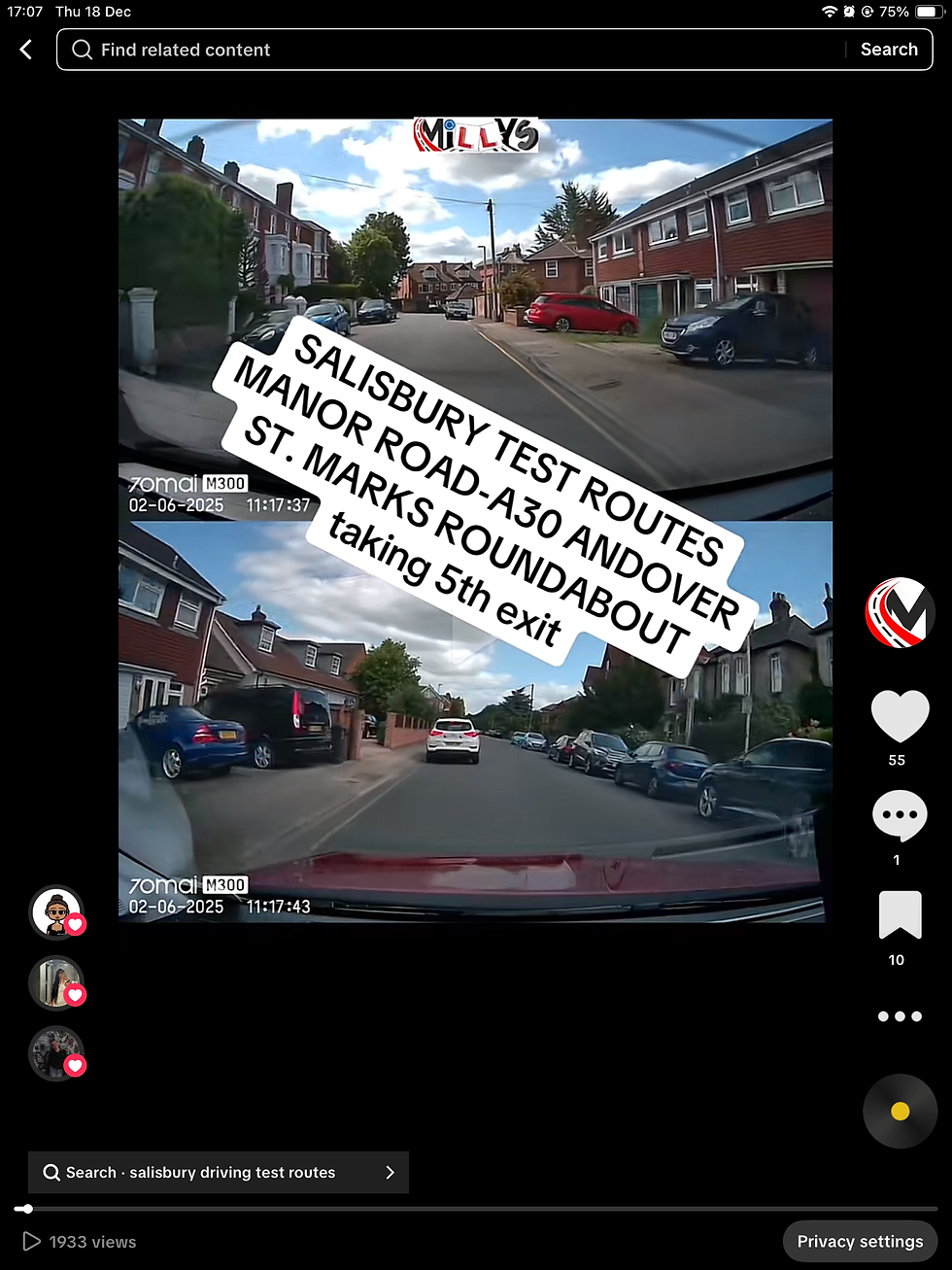Unveiling the Secrets of Mastering Defensive Driving: Professional Techniques for Today's Roads
- Sarah Cleal - Approved Driving Instructor

- Nov 2, 2024
- 4 min read
Driving is a routine part of life for many people, but it comes with risks that can’t be ignored. Accidents can happen in the blink of an eye, making it vital to be prepared. Defensive driving is a key skill that enables you to navigate these risks effectively. It combines awareness, strategic decision-making, and proactive behaviour behind the wheel to minimise the potential for accidents. In this post, we will explore professional techniques that can help you sharpen your defensive driving skills, leading to a safer and more confident driving experience.
Understanding Defensive Driving
Defensive driving is all about using techniques and strategies that prepare you for unexpected situations on the road. It involves more than just obeying speed limits or buckling your seatbelt. A defensive driver anticipates possible hazards, stays aware of their surroundings, and takes smart steps to avoid accidents.
What sets defensive driving apart is its emphasis on factors beyond just the driver. It focuses on external elements that can lead to accidents, empowering you to respond wisely to various road scenarios and the unpredictable behavior of others on the road.
Stay Alert and Minimise Distractions
A fundamental aspect of defensive driving is staying alert and engaged. This means having your full attention on the task of driving without distractions.
The Importance of Focused Attention
Distractions are everywhere. Mobile phones, passengers chatting, or even adjusting the radio can divert your focus. A skilled defensive driver maintains concentration solely on the road.
Think about activating "do not disturb" mode on your phone before driving or using hands-free features. Studies show that minimising such distractions can decrease the risk of accidents by up to 30%. Keeping your eyes on the road directly impacts your ability to respond to sudden changes, like a car braking in front of you.

Anticipate and Adapt to Other Drivers
Defensive driving isn’t just about your actions; it’s also about predicting how other drivers will behave. By anticipating their moves, you can adjust your own driving to avoid potential collisions.
Keeping a Safe Distance
One effective method is to maintain a safe following distance. This gives you extra time to react if the vehicle ahead makes a sudden stop.
A practical rule to remember is the “two-second rule.” In dry weather conditions, choose a landmark by the side of the road, and once the car in front of you passes it, count to two before you reach the same spot. This simple technique can greatly reduce the chances of rear-end accidents. According to research, following this guideline can lower the risk of collisions by as much as 40%.
Know the Road and Weather Conditions
Every road presents unique challenges, which can be amplified by weather conditions. For example, the 'two-second' rule becomes four seconds in wet weather and twenty seconds in icy and snowy weather.
Adapting to Weather Challenges
Driving in rain, snow, fog, or ice requires you to adjust your speed and approach. For instance, in rainy weather, reducing your speed helps prevent hydroplaning and improves your vehicle control. In fact, driving too fast for conditions is a contributing factor to nearly 30% of all traffic accidents in rainy conditions.
Always check the weather forecast before setting out. Pay attention to alerts regarding road conditions. Using headlights, keeping a safe distance, and being especially cautious during adverse weather enhances safety for both you, your passengers and your fellow drivers.
Understand Your Vehicle
A well-maintained vehicle is essential for safe driving. Knowing how your car performs in different conditions can enhance your defensive driving skills.
Regular Maintenance is Key
Stay proactive with vehicle maintenance by regularly checking key components like brakes, tires, lights, and windscreen wipers. For example, ensuring your tire tread depth meets the recommended levels can improve traction significantly in wet conditions.
Having a solid understanding of how your vehicle behaves in various situations increases your confidence and prepares you for unexpected events on the road.
Create a Plan for Emergencies
Even with all precautions taken, emergencies can still arise. Preparing for various scenarios can give you peace of mind and boost your readiness.
The Importance of Being Prepared
Consider enrolling in a defensive driving course to learn how to effectively handle various emergencies. Many courses cover essential techniques for situations like tire blowouts, engine failures, and collision scenarios.
Moreover, keeping an emergency kit in your vehicle with items like a torch, first aid supplies, and drinking water can be crucial should an unexpected situation occur.
Avoid Aggressive Driving Behaviour
Defensive driving stands in sharp contrast to aggressive driving. An aggressive driver tends to speed, tailgate, or exhibit road rage, all of which increase the risk of accidents.
Cultivating Patience
Practice patience and employ stress management techniques. Utilise deep breathing exercises, listen to calming music, or give yourself extra time to reach your destination. By fostering a calm driving environment, you contribute to a safer road for yourself and others.
Final Reflections on Defensive Driving
Mastering defensive driving techniques takes time and dedication. By focusing on your surroundings, predicting the actions of others, and adapting your driving to changing conditions, you can greatly reduce the risk of accidents.
Incorporating these strategies into your daily routine not only enhances your safety but also improves the overall driving experience for everyone on the road. Commit to defensive driving today, and become a more responsible and responsive driver.
Remember, driving is a shared responsibility, and your actions directly impact the safety of others. Making defensive driving a priority will help you navigate the roads with greater confidence and assurance.





Comments